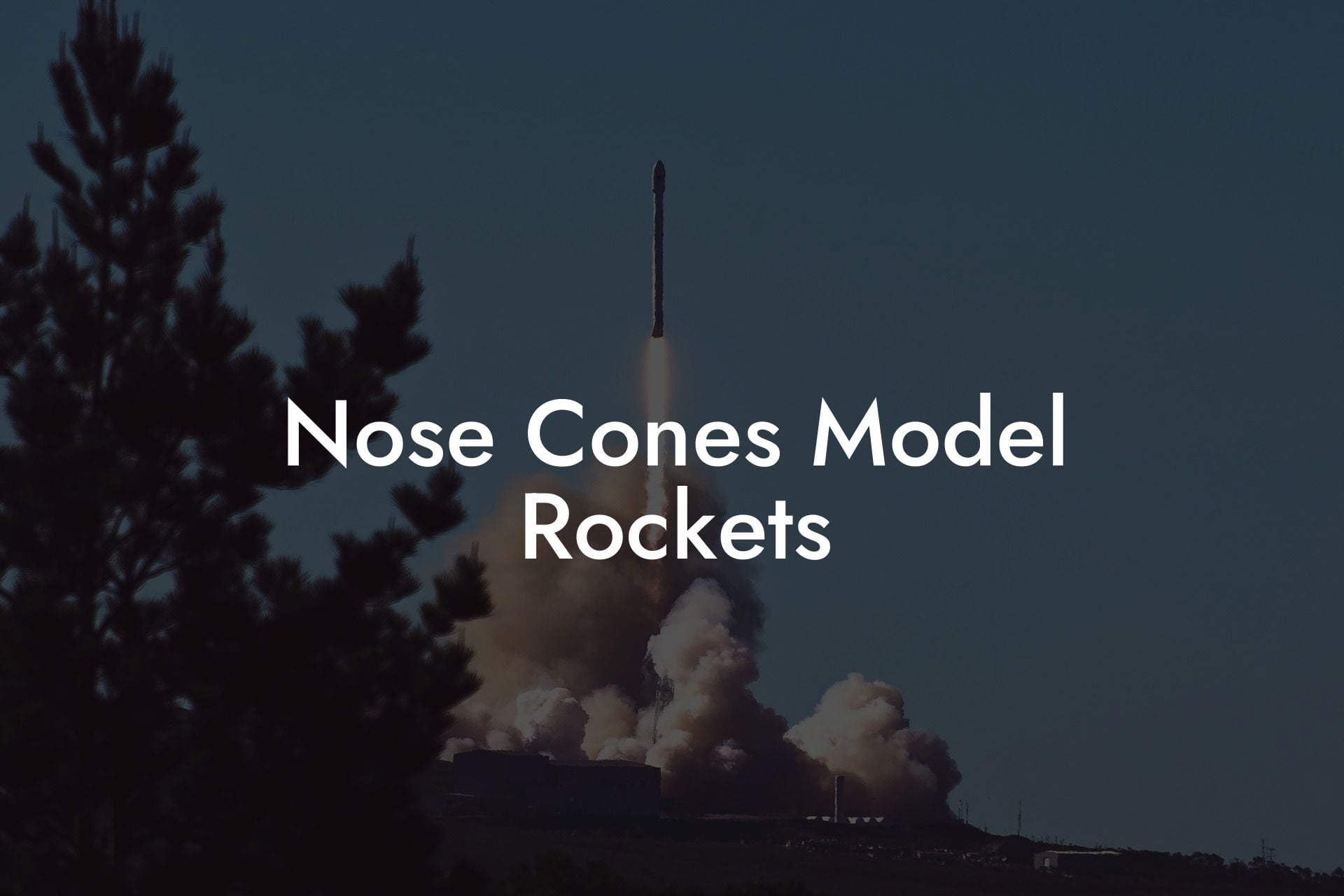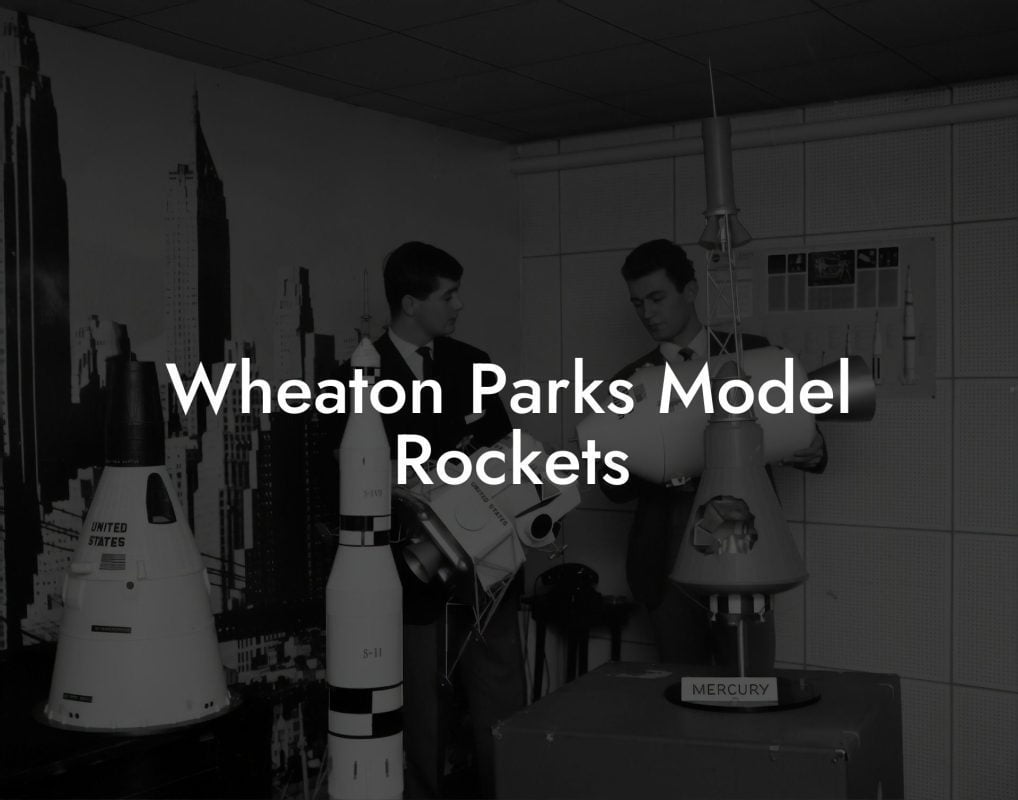Imagine soaring to new heights with your model rocket, its nose cone slicing through the air with precision and style. Welcome to the world of model rocketry, where the perfect nose cone can make all the difference between a mediocre flight and a truly unforgettable experience. Whether you're a seasoned pro or just starting out, this comprehensive guide will take you on a journey to explore the fascinating realm of nose cones, from their history and design principles to the latest innovations and expert tips.
Quick Links to Useful Sections
- The Evolution of Nose Cones: A Brief History
- Nose Cone Design Principles: The Science Behind the Shape
- Nose Cone Materials: Exploring the Options
- Designing and Building Your Own Nose Cone: Tips and Tricks
- Nose Cone Innovations: The Future of Model Rocketry
- Resources and community Support: Your Next Steps
- Nose Cones Model Rockets FAQs: Your Questions Answered
The Evolution of Nose Cones: A Brief History
The nose cone, a critical component of any model rocket, has undergone a remarkable transformation since the early days of rocketry. From humble beginnings as simple, rounded tips to the sophisticated, aerodynamically optimized designs of today, nose cones have played a crucial role in shaping the course of model rocketry.
In the 1950s and 60s, model rockets were often equipped with basic, cone-shaped nose cones that provided minimal aerodynamic benefits. However, as the hobby gained popularity and technology advanced, designers began to experiment with new materials and shapes, leading to the development of more streamlined and efficient nose cones.
Today, nose cones are precision-engineered to minimize drag, maximize stability, and provide a smooth, consistent flight experience. With the advent of 3D printing and advanced computer simulations, model rocket enthusiasts can now design and build nose cones that were previously unimaginable.
Nose Cone Design Principles: The Science Behind the Shape
So, what makes a great nose cone? It all comes down to aerodynamics and the careful balance of several key factors, including shape, size, weight, and material selection.
Looking For The Best Model Rocket Kits? You'll Love These:
Shape: The ideal nose cone shape is a compromise between minimizing drag and maximizing stability. A rounded, ogive-shaped nose cone is often preferred, as it provides a smooth, continuous curve that helps to reduce air resistance.
Size: The size of the nose cone must be carefully matched to the size and weight of the model rocket. A nose cone that is too large or too small can negatively impact the rocket's stability and overall performance.
Weight: The weight of the nose cone is critical, as it affects the overall weight distribution of the model rocket. A lightweight nose cone can help to improve the rocket's power-to-weight ratio, while a heavy nose cone can hinder performance.
Material Selection: The choice of material for the nose cone is also crucial, as it must be strong, lightweight, and resistant to heat and friction. Popular materials include balsa wood, plastic, and advanced composites like carbon fiber.
Nose Cone Materials: Exploring the Options
When it comes to selecting the perfect material for your nose cone, the options are vast and varied. Here are some of the most popular materials used in model rocketry, each with their unique advantages and disadvantages:
- Balsa Wood: A classic choice for model rockets, balsa wood is lightweight, inexpensive, and easy to work with. However, it can be prone to warping and may not be suitable for high-performance rockets.
- Plastic: Plastic nose cones are durable, resistant to heat and friction, and can be molded into complex shapes. However, they can be heavy and may not provide the same level of aerodynamic efficiency as other materials.
- Carbon Fiber: Advanced composites like carbon fiber offer exceptional strength, stiffness, and weight savings. However, they can be expensive and require specialized tools and expertise to work with.
- 3D Printed Materials: The latest innovation in nose cone materials, 3D printed plastics and resins offer unparalleled design flexibility, precision, and customization options. However, they may not be suitable for high-temperature applications.
Designing and Building Your Own Nose Cone: Tips and Tricks
Whether you're a seasoned pro or just starting out, designing and building your own nose cone can be a fun and rewarding experience. Here are some expert tips to help you get started:
Start with a Concept: Before you begin designing, think about the type of model rocket you want to build and the performance characteristics you want to achieve. This will help you determine the optimal shape, size, and material for your nose cone.
Use Computer-Aided Design (CAD) Software: CAD software like Fusion 360 or Blender can help you create precise, complex shapes and simulate the aerodynamic performance of your nose cone.
Choose the Right Tools: Depending on the material you've chosen, you may need specialized tools like a lathe, milling machine, or 3D printer to shape and refine your nose cone.
Test and Refine: Once you've built your nose cone, test it on a model rocket and refine the design based on the results. This iterative process is key to achieving optimal performance.
Nose Cone Innovations: The Future of Model Rocketry
As model rocketry continues to evolve, we can expect to see even more innovative nose cone designs and materials emerge. Here are some exciting trends and developments on the horizon:
Advanced Aerodynamics: Researchers are exploring new aerodynamic shapes and materials that can further reduce drag and improve model rocket performance.
Smart Nose Cones: The integration of sensors, electronics, and artificial intelligence (AI) into nose cones could enable real-time performance monitoring, autonomous flight control, and even advanced safety features.
Sustainable Materials: The development of sustainable, eco-friendly materials for nose cones could reduce the environmental impact of model rocketry and make the hobby more accessible to a wider audience.
Resources and community Support: Your Next Steps
Whether you're just starting out or looking to take your model rocketry skills to the next level, there are many resources available to help you on your journey:
- Online Forums and Communities: Join online forums like Reddit's r/ModelRockets or specialized model rocketry communities to connect with other enthusiasts, share knowledge, and learn from experts.
- Tutorials and Guides: Explore online tutorials, guides, and videos that provide step-by-step instructions for designing and building nose cones, as well as tips for improving model rocket performance.
- Local Clubs and Meetups: Look for local model rocketry clubs, meetups, or events in your area, where you can meet other enthusiasts, learn from their experiences, and showcase your own creations.
Remember, the world of model rocketry is all about experimentation, innovation, and community. By embracing these principles, you'll be well on your way to creating the perfect nose cone and taking your model rocketry skills to new heights.
Nose Cones Model Rockets FAQs: Your Questions Answered
Here are some frequently asked questions about nose cones and model rockets:
1. What is the purpose of a nose cone on a model rocket?
The nose cone serves to reduce air resistance, improve stability, and protect the model rocket's payload during flight.
2. What is the ideal shape for a nose cone?
The ideal shape for a nose cone is a compromise between minimizing drag and maximizing stability, often achieved through an ogive-shaped design.
3. What materials are commonly used for nose cones?
Popular materials for nose cones include balsa wood, plastic, carbon fiber, and 3D printed materials.
4. How do I design and build my own nose cone?
Start with a concept, use CAD software to design your nose cone, choose the right tools and materials, and test and refine your design through iteration.
5. What are some common mistakes to avoid when building a nose cone?
Common mistakes include incorrect material selection, poor aerodynamic design, and inadequate testing and refinement.
Looking For The Best Model Rocket Kits? You'll Love These:
Useful Interruption: Dive deeper into the world of Model Rockets with our most popular sections. If there is anything you think is missing or anything you would love for us to write about, just give us a shout.
- Getting Started & Basics With Model Rockets
- Model Rocket Design, Build & Customization
- Model Rocket Propulsion & Engine Technology
- Model Rocket Launch Techniques & Recovery
- Model Rocket Advanced Rocketry & Innovations
- Model Rocket DIY and Customization
- Model Rocket Equipment Reviews & Digital Tools
- Community, Competitions & Education
- Model Rocket Troubleshooting & FAQs
- Model Rocket Bonus/Seasonal & Niche Topics
A group of model rocket enthusiasts gathered at a field for their weekly launch event. Among them was Dave, a seasoned builder known for pushing the limits of hobby rocketry. This time, he had outdone himself.
“Ladies and gentlemen,” Dave announced, dramatically pulling a cloth off his latest creation, “I present to you: The Kraken!”
The crowd gasped. This wasn’t just a model rocket—it was a monster. The thing stood 8 feet tall, had six clustered engines, and was covered in enough duct tape to qualify as a classified aerospace project.
“Dave,” muttered Steve, the cautious safety officer, “Have you, uh… done the math on this?”
“Math?” Dave scoffed. “I built it in my garage at 3 a.m. with parts from eBay. This is an art piece, Steve.”
The countdown began.
5…
4…
3…
2…
1…
The engines ignited with a BOOM, and The Kraken shot up… kind of. It immediately did a violent barrel roll, narrowly missing the spectators before skyrocketing at an angle that could only be described as “legally questionable.”
The crowd collectively ducked as The Kraken flew straight over the adjacent cornfield, where Old Man Jenkins, the grumpiest farmer in town, was minding his business.
KABOOM!
The rocket disappeared behind the barn. A moment later, a flaming piece of Estes igniter wire landed at Steve’s feet. The silence was deafening.
And then—an unmistakable sound echoed across the field.
Jenkins’ shotgun being cocked.
“DAVE!!!” Steve shouted. “RUN.”
And that was the day Dave invented the first-ever biologically powered rocket booster: pure adrenaline.
To this day, nobody knows where The Kraken landed, but legend has it, it still haunts the skies, terrifying unsuspecting drones and low-flying birds.















